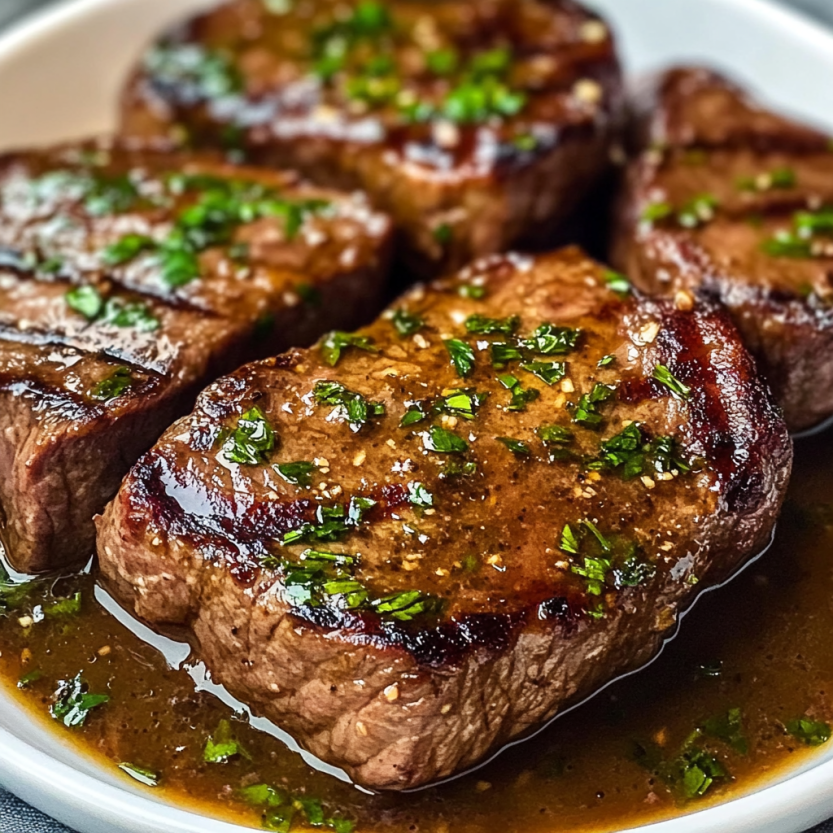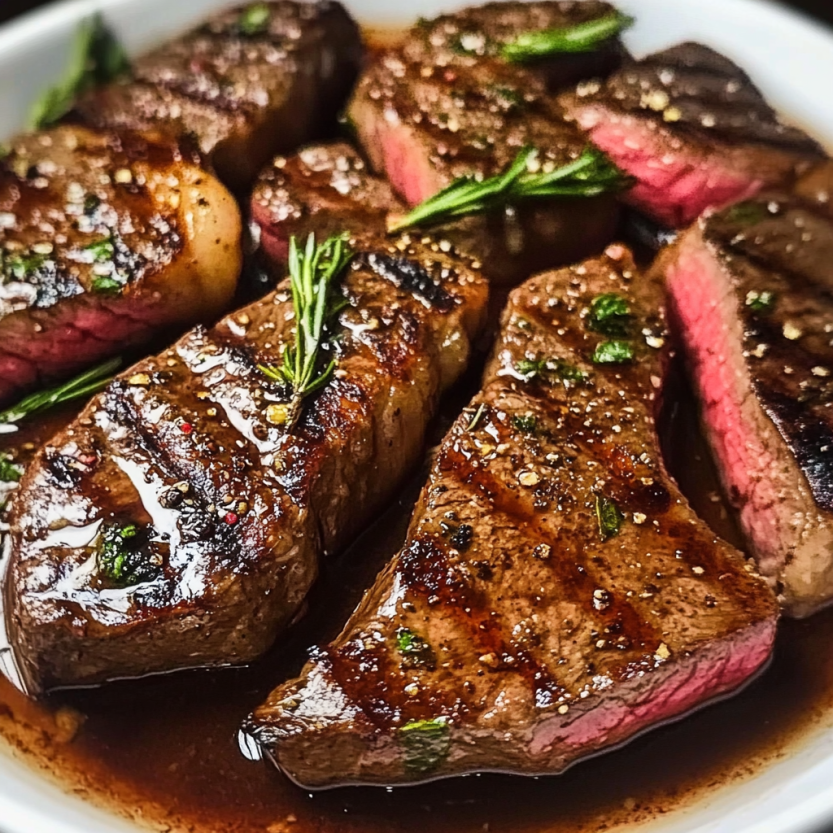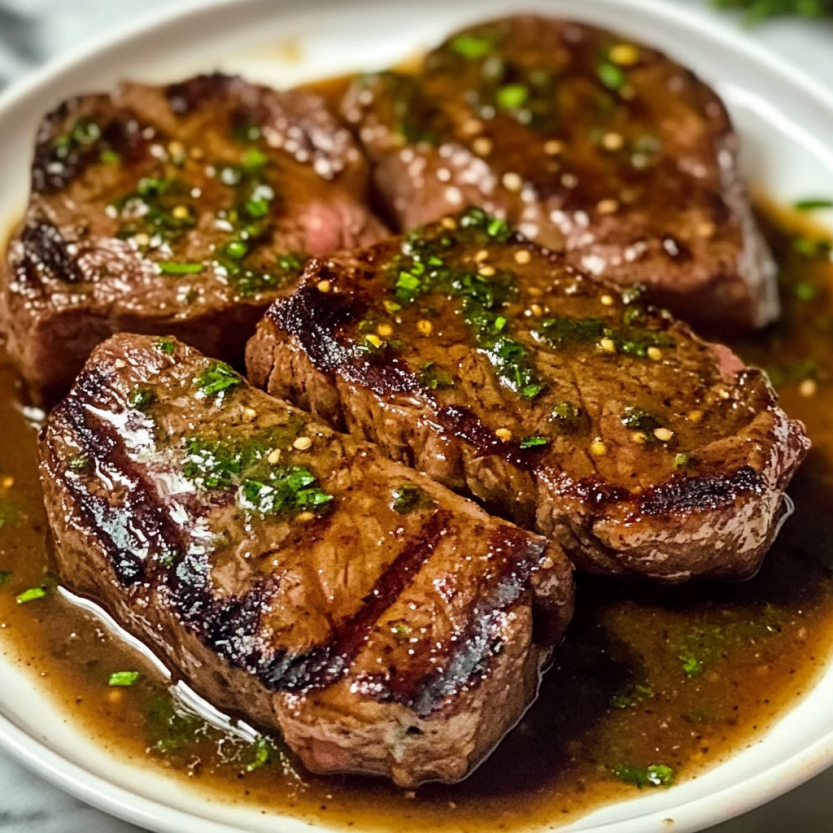 Save
Save
This hearty steak marinade has transformed countless ordinary cuts of beef into restaurant-quality meals in my kitchen. The perfect balance of savory, tangy, and slightly sweet flavors infuses deeply into the meat, creating juicy, tender results every single time.
I discovered this marinade formula after years of disappointing steaks that never quite matched steakhouse quality. After experimenting with dozens of combinations, this version became my secret weapon for impressing dinner guests without breaking the bank.
Ingredients
- Soy sauce: Provides that umami depth and helps tenderize the meat through its salt content
- Olive oil: Carries flavors into the meat while helping create that perfect sear
- Worcestershire sauce: Adds complex tanginess and enhances the natural beef flavor
- Lemon juice: Brightens the flavor and its acid helps break down tough muscle fibers
- Brown sugar: Caramelizes beautifully on the grill and balances the savory elements
- Garlic cloves: Use fresh for the most aromatic punch and mince finely for best distribution
- Fresh rosemary: Offers piney brightness that pairs perfectly with beef; look for vibrant green sprigs
- Black pepper: Provides essential heat that stands up to the strong beef flavor
- Red pepper flakes: Add a subtle warmth that builds as you eat, not overpowering heat
- Steaks: Choose well-marbled cuts for best results; ribeyes offer excellent fat distribution
Step-by-Step Instructions
- Combine Marinade Ingredients:
- Whisk all ingredients except the steak in a bowl until the brown sugar fully dissolves. Take your time here as properly mixed marinade ensures even flavor distribution throughout the meat. The mixture should look unified with a rich amber color.
- Prepare The Steaks:
- Pat your steaks completely dry with paper towels before adding to the marinade. This step is crucial as excess moisture prevents proper absorption of flavors. Run your hands along the edges to trim any excessive fat if desired.
- Marinate Thoroughly:
- Place steaks in a zip-top bag or shallow dish and pour marinade over them. Press out excess air if using a bag and manipulate the meat to ensure every surface gets covered. Refrigerate for at least 2 hours; the proteins need this time to break down properly.
- Bring To Room Temperature:
- Remove steaks from refrigeration 30 minutes before cooking. This critical step ensures even cooking from edge to center. The meat should lose its chill but not become warm.
- Cook With High Heat:
- Preheat your cooking surface until it's extremely hot. You want instant sizzle when the meat touches the surface. For grills, look for when the coals have white ash; for pans, wait until you see a slight smoke.
- Rest Before Serving:
- Transfer cooked steaks to a cutting board and tent loosely with foil. This 5-minute rest allows juices to redistribute throughout the meat instead of running out when cut.
 Save
Save
My favorite element of this marinade is the brown sugar. I discovered its transformative power years ago when I accidentally substituted it for white sugar. The resulting caramelization created such a beautiful crust that my husband thought I'd ordered from his favorite steakhouse!
Perfect Timing
The marinating time significantly impacts your results. For tender cuts like ribeye or strip steak, 2 hours provides excellent flavor without breaking down the meat too much. Tougher cuts like flank or skirt benefit from the full 8 hours, giving the acids time to properly tenderize the muscle fibers. I've found the sweet spot for most steaks is about 4 hours—long enough for flavor penetration but not so long that the meat becomes mushy.
Temperature Guide
Achieving your preferred doneness relies entirely on internal temperature, not cooking time. Rare steaks should reach 125°F with a cool red center. Medium-rare, my personal recommendation for most cuts, hits perfection at 135°F with a warm red center that showcases the marinade's flavors while maintaining juiciness. Medium at 145°F provides a pink center with noticeably less moisture. For those who prefer medium-well, aim for 150°F, though I've found the marinade becomes increasingly important at higher temperatures to maintain moisture.
Serving Suggestions
Transform this marinated steak into a complete meal by pairing it with complementary sides that balance its rich flavors. Roasted garlic mashed potatoes provide a creamy contrast that soaks up any extra juices. Grilled asparagus with lemon zest echoes the citrus notes in the marinade. For a complete steakhouse experience, serve with a bold red wine like Cabernet Sauvignon or Malbec—these stand up beautifully to the marinade's complex profile while cutting through the richness of the meat.
 Save
Save
Recipe Questions
- → How long should I marinate my steaks?
For optimal flavor, marinate steaks for 2-4 hours. You can extend to 8 hours for a stronger flavor profile, but avoid exceeding this timeframe as the acid in the marinade can break down the meat too much and affect texture.
- → Can I use this marinade for other types of meat?
Absolutely! While designed for beef, this marinade works wonderfully with chicken, pork, and even firm fish like swordfish or tuna. Adjust marinating times accordingly—about 1-2 hours for poultry and 30 minutes for fish.
- → Can I make this marinade ahead of time?
Yes! You can prepare this marinade up to 5 days in advance and store it in an airtight container in the refrigerator. Just give it a good shake or stir before using.
- → What's the best cooking method for marinated steaks?
This marinade creates excellent results whether you're grilling, pan-searing, or broiling. High heat is key for developing a flavorful crust while keeping the interior juicy. Remember to let your steaks come to room temperature for 30 minutes before cooking.
- → Why do steaks need to rest after cooking?
Resting for 5 minutes allows the juices to redistribute throughout the meat. If you cut into the steak immediately after cooking, those flavorful juices will run out onto your plate instead of remaining in the meat, resulting in a drier steak.
- → Can I use dried herbs instead of fresh?
Yes, you can substitute dried herbs for fresh. As a general rule, use about 1/3 the amount of dried herbs compared to fresh (as the recipe notes, 1 teaspoon dried rosemary can replace 1 tablespoon fresh). Dried herbs are more concentrated in flavor.